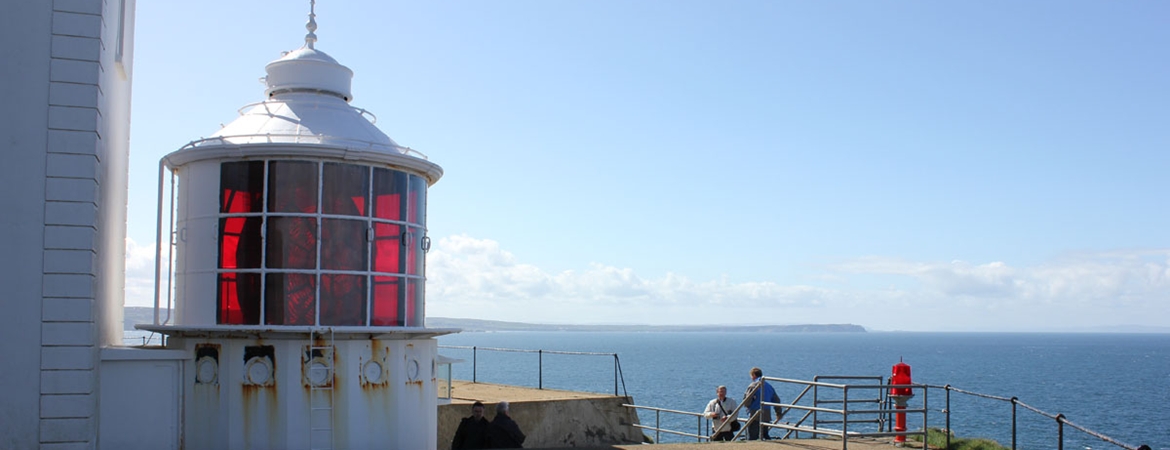 |
Rathlin West Lighthouse is one of 70 lighthouses operated by the Commissioners of Irish Lights around the coast of Ireland and plays a vital role in maritime safety. It is also one of twelve lighthouses which make up Great Lighthouses of Ireland, a new all-island tourism initiative. Visitors from home and abroad now have the chance to visit or stay in a lighthouse and to find out about our history and heritage, to appreciate the spectacular natural world around us, to discover the technology at work today and to engage with our coastal communities. With aspects to appeal to people of all ages and interests, Great Lighthouses of Ireland offers memorable and enriching experiences and creates appreciation of the role of lighthouses past, present and into the future. To find out more about Great Lighthouses of Ireland click here |
History
The first mention of another light on Rathlin was made early in 1901 when a suggestion for a light on Doone Point, on the east cost of the island north of Rue Point, or on Rue Point itself. The proposed positions were probably too close to the already established light on Altacarry Head but soon after the suggestion the Board referred the subject to the Inspecting Committee for a light at the west end of Rathlin Island.
Differences in opinion were expressed between Trinity House and Irish Lights as to which headland Bull Point or Crockantirrive was the more suitable for the light and fog signal, even to placing the light on one and the fog signal on the other. During 1902 Trinity House visited the proposed sites on Rathlin and experiments were carried out later to select the most suitable site for the fog signal. Crockantirrive was chosen and the Board decided that the name was obtained from Trinity House for a light and siren fog signal station in 1903 and the Board of Trade gave their sanction in 1904.
Five years elapsed before the subject was brought up again and the Board agreed to include the new light and fog signal in the 1910-11 estimates.
Progress was slow and during 1914 the Board of Trade enquired if the work could not be hastened. When one sees the amount of concrete poured and set against the cliff at Crockantirrive coupled with an inclined railway built at Corraghy so that materials could be landed and brought across to the new station, no wonder the building took so long. Towards the end of 1916 the light and dwellings were completed and Captain Deane, the Inspector, enquired if the Admiralty's views could be ascertained prior to issuing a Notice to Mariners for the new light. The Admiralty did not reply until early 1919 stating they saw no reason why the light and fog signal should not be put into operation, so a draft Notice was approved by the Board for a light only to be exhibited on 10th March 1919 with a character of one 0.4 second red flash every 5.0 seconds.
The fog signal Notice to Mariners was approved by the Board in October 1924 and established on 15th July 1925 with four 1.5 second blasts every 60 seconds. On 17 April 1982 the diaphone fog signal was replaced by an electric fog signal. In November 1995 the fog signal was permanently discontinued. The light is exhibited in poor visibility during daylight hours.
Rathlin West was converted from a manned paraffin light to an unwatched electric and is now monitored from Rathlin East Lighthouse. On the 30th November 1983 it was demanned. All maintenance duties are now carried out by an Attendant.
On 30 November 1995 the fog signal was discontinued and the light is now exhibited during the day in times of reduced visibility.









